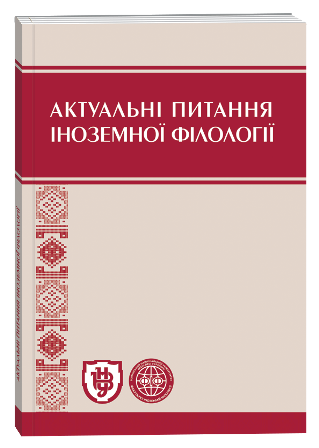SPANISH FAIRY TALES: A PROBLEM OF PRAGMATIC ADAPTATION AND THE LIMITS OF VARIATIONS
Keywords:
Fairy tale, folklore, translation, genre, style, domestication, foreignizationAbstract
The translation of folk tales occupies a rather special place among the genre strategies of literary translation. Fairy tales belong to peripheral fiction, as opposed to high authorial literature. The specificity of the translation of fairy tales results from the fact that their recipients are mainly children, and therefore the translator should take into account the age characteristics of the future reader of their translation and at the same time should not neglect such fundamental concepts as adequacy and equivalence. The main features of a fairy tale can be the following: the beginning, the ending, often the repetition of an action three times, the presence of a didactic element, the presence of a dichotomy (good - evil) and the absence of detailed descriptions (as opposed to prose). From the point of view of the structural-semantic content, the text of fairy tales has a number of conventional elements, such as set expressions at the beginning of a tale and the conventional form of the ending. In terms of the topics covered, Ukrainian and Spanish tales coincide in many respects. However, there remains a lot distinguishing them; primarily different linguistic and conceptual pictures of the world. Folk tales reflect certain cultural realities, the world view of a nation, thus the translation should reflect its specific nature. From the point of view of the verbal form of Spanish fairy tales we should note that the syntax of Spanish tales is much more complicated than that of Ukrainian, thus the translator often chooses to divide one complex unit into several simple ones, replace infinitive forms with gerunds etc. The beginning and the ending in both languages have established conventional forms which are preserved by the translator, often being replaced with established Ukrainian conventional structures. However, we can also observe the loan translation of Spanish conventions, which contributes to preserving the national color. In terms of vocabulary, a comparative analysis showed a greater lexical variety of Ukrainian translation as compared to the original Spanish version due to the neutrality of Spanish lexemes replaced with connotatively-marked Ukrainian ones (here we refer to synonymic counterparts). In the translation of Spanish folk tales there is a tendency to domestication in terms of its structural-semantic arrangement, but it is lexical realities, lifestyle and customs that give the translated text the necessary national color.
References
Bakanova, Anna. Osobennosti yazika ispanskih narodnih skazok. http://www.dissercat.com/content/osobennosti-yazyka-ispanskikh-narodnykh-skazok
Kazku narodiv svitu: https://erudyt.com.ua/ua/ispanskie-skazki-izd-kraina-mrij.html
Klimenko, O. 2011. Trudnoschi perekladu literaturnoi kazku (na materiali R. Dal “THE BFG” ta ii perekladiv). Odesa.
Koshchii, I. 2012. “Ganrovo-stilistichni osoblivosti ukrainskogo dialogu v piesi F. G. Lorki “Dim Bernardi Albi”. 68–72.
Navarenno, I. 2002. “Pragmatika ispanskoi narodnoi kazki ta ii prosodichna organizazia”. PhD diss.
Mastilko, N. “Semantiko-strukturni osoblivosti ispanskoi kazku.” Problrmi semantikislova, rechennia ta tekstu. Kyiv: KDLU 133–137.
Oittinen, R. 1986. Translating for Children. Riitta Oittinen. New York and London: Garland Publishing, Inc.
Reiss, K. 2000. Translation Criticism. Manchester: St. Jerome Publishing.
Shavit, Z. Poetics of Children’s Literature. Athens; London: Georgia University Press.
Verba, G. 2010. “Peculiaridades del funcionamiento de los derivados con sufijos apreciativos en los textos artísticos españoles y su traducción al ucraniano”. España-Europa Oriental: el alejamiento geográfico y la proximidad cultural. Seminario científico Internacional de Hispanistas. Lviv: Astrolabio Editorial.
Словник SUM : https://www.slovnyk.ua/index.php?swrd=челядь







